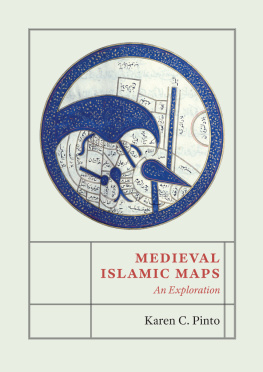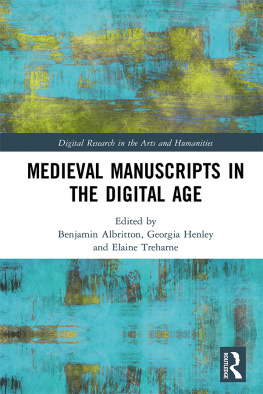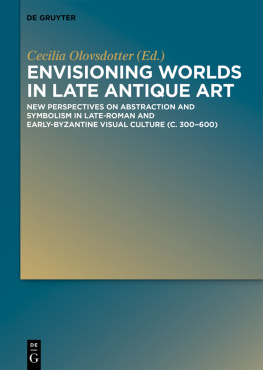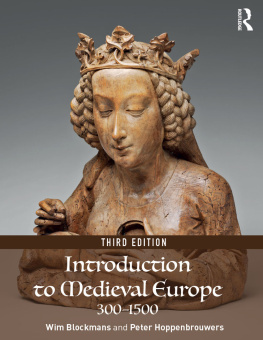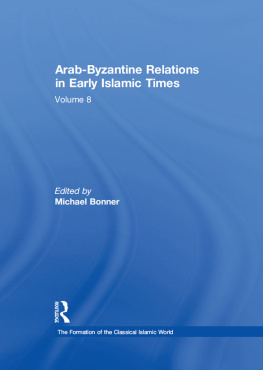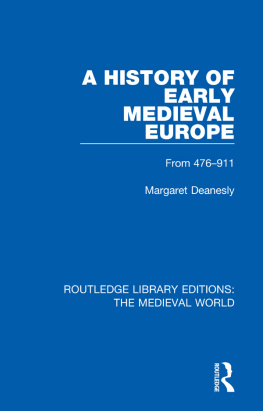Cosmos and Community in Early Medieval Art
Cosmos and Community in Early Medieval Art
Benjamin Anderson

The Hull Memorial Publication Fund of Cornell University contributed a subvention that aided in the production of this book.
Publication of this book also was aided by a grant from the Millard Meiss Publication Fund of the College Art Association.

The International Center of Medieval Art supported acquisition of images for this book through award of a research grant funded by the Kress Foundation.
Copyright 2017 by Benjamin Anderson.
All rights reserved.
This book may not be reproduced, in whole or in part, including illustrations, in any form (beyond that copying permitted by Sections 107 and 108 of the U.S. Copyright Law and except by reviewers for the public press), without written permission from the publishers.
yalebooks.com/art Designed by Leslie Fitch Set in type Crimson and Source Sans Pro type by Julie Allred, BW&A Books, Inc.
Printed in China by Regent Publishing Services Limited
Library of Congress Control Number: 2016933954 ISBN 978-0-300-21916-6 eISBN 978-0-300-22849-6
A catalogue record for this book is available from the British Library.
This paper meets the requirements of ANSI/NISO z39.48-1992 (Permanence of Paper).
10 9 8 7 6 5 4 3 2 1
Jacket illustrations: (front) Solar diagram. The Handy Tables of Ptolemy (detail of )
Frontispiece: Cloth of the Ewaldi. Central Europe, before 1000. ()
CONTENTS
PREFACE AND ACKNOWLEDGMENTS
As an exercise in comparison, this study hopes to engage readers who have varying levels of familiarity with the cultures of early medieval Europe and western Asia. Perhaps no decisions run greater risks of annoying specialists and alienating generalists than those involving transliteration. My guiding principles have been to facilitate both ease of reading and access to further information. Names and terms from ancient Greek are rendered as found in the third edition of the Oxford Classical Dictionary; those in medieval Greek as found in the Oxford Dictionary of Byzantium; those in Arabic as found in the second edition of the Encyclopedia of Islam (exceptions: j is used for , and q for ); and those in Persian as found in the online edition of the Encyclopedia Iranica (exceptions: ch for , kh for , and sh for ). The exceptions allow a greater number of letters to be distinguished without diacritics, which are omitted from all transliterations, except for long vowel marks, which are suppressed in the discursive text but expressed in bibliographic references.
All years are A.D. unless otherwise noted. Regnal dates are given for caliphs and Byzantine emperors, and dates of office for patriarchs and popes. Names of constellations and planets follow standard English usage. The Quran is quoted in the translation of Yusuf Ali, and the Bible in the New English Translation of the Septuagint.
The pleasure of writing this book has been enhanced by the participation of many and a variety of people in its development. To name them all would be impossible: in future I must keep notes. The book would never have been written without the encouragement and guidance of my mentor, Dale Kinney, and the institutional support of the Graduate School of Arts and Sciences at Bryn Mawr College, the Deutsches Akademisches Austausch dienst, the Center for Advanced Study in the Visual Arts, and the Departments of History of Art and Visual Studies and of Classics at Cornell University. Shorter stays at the American Center for Oriental Research in Amman and the Deutsches Archolo gisches Institut in Istanbul also left their marks.
Many of the arguments advanced here have been tested and refined in public fora. I am particularly grateful to audiences at the University of New Mexico, where I presented a version of the first chapter; the Index of Christian Art, where I pre sented a version of the second; the Center for Advanced Study in the Visual Arts, where I presented a composite version of the third and the fourth; and the Institut fr Byzantinistik, Byzantinische Kunstgeschichte und Neogrzistik, Ludwig-MaximiliansUniversitt, Munich, whose members engaged with versions of the entire project at successive Doktorandenkolloquien.
In and around Philadelphia I benefited from the conversation and advice of Mehmet-Ali Ata, David Cast, John Haldon, Christiane Hertel, Renata Holod, Ann Kuttner, Susanna McFadden, Lawrence Nees, and Yael Rice; in Munich: Franz Alto Bauer, Albrecht Berger, Rolf Schneider, and Avinoam Shalem; in Washington: Dana Byrd, Razan Francis, Julian Gardner, and Margaret Mullett; and in Ithaca: Annetta Alexandridis, Andrew Hicks, Verity Platt, Cynthia Robinson, and Courtney Roby. More distant correspondents included Persis Berlekamp, Matthew Canepa, Ivan Drpi, Trudy Jacoby, Marcia Kupfer, Colum Hourihane, and Joanna Story. On Christmas Eve in Dublin, Emily Bereskin and I designed an important mural, still unexecuted.
At Yale University Press, Gillian Malpass greeted the project with enthusiasm, and Katherine Boller was the ideal editor, Tamara Schechter the ideal editorial assistant. I am grateful to the two readers for generous and helpful critiques. The manuscript was ably guided through production by Heidi Downey and benefited substantially from the careful copyediting of Elma Sanders. At Cornell, Carrie Fulton, Betty Hensellek, and Asl Meneve assisted with the preparation of the manuscript. The costs of the illustrations were defrayed by a Kress Research Grant from the International Center of Medieval Art and by the Department of History of Art and Visual Studies at Cornell, while subventions toward production costs were supplied by the Hull Memorial Publi cation Fund of Cornell University and the Millard Meiss Publication Fund of the College Art Association.
This book is dedicated to my parents, who taught me the virtue of skepticism.
INTRODUCTION
Solitude and Community
The Roman historian Cassius Dio relates an anecdote about a near contemporary, the emperor Septimius Severus (193211), who, seeing that his sons were changing their mode of life and that the legions were becoming enervated by idleness, made a campaign against Britain, though he knew that he should not return. He knew this chiefly from the stars under which he had been born, for he had caused them to be painted on the ceilings of the rooms in the palace where he was wont to hold court, so that they were visible to all, with the exception of that portion of the sky which, as the astrologers express it, observed the hour when he first saw the light [that is, the ascendant]; for this portion he had not depicted in the same way in both rooms.
Thus visitors to the imperial palace could be received in one of two rooms. The ceiling of each bore a depiction of the stars that were visible when Severus was born. These paintings could be understood in at least two different ways. Some visitors will have associated them with the emperors personal destiny. Herodian, another third-century historian, relates that the young Severus received portents that foretold his future rule, which he later described in his autobiography and commemorated in public monuments. A bronze equestrian statue in the Roman forum was said to depict a dream in which a stallion raised Severus aloft on that very spot, prompting his acclamation by the people. For those who knew the story, the equestrian statue depicted the inevitability of Severuss rule. An image of the stars that shone at Severuss birth displayed in the palace whence he ruled will also have evoked the emperors unique fate.
Next page


